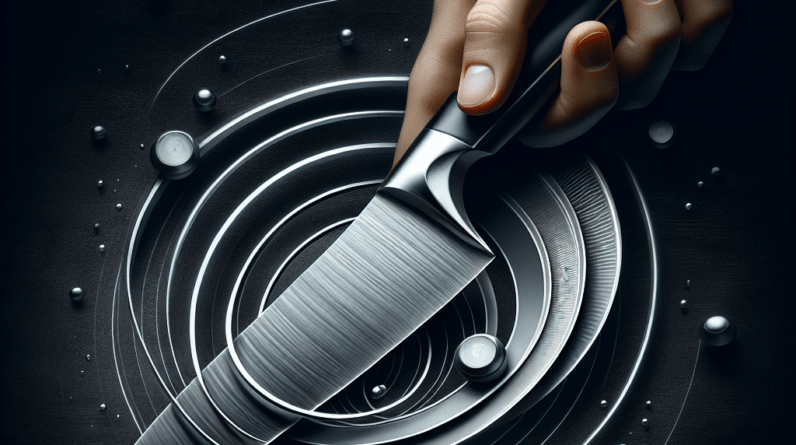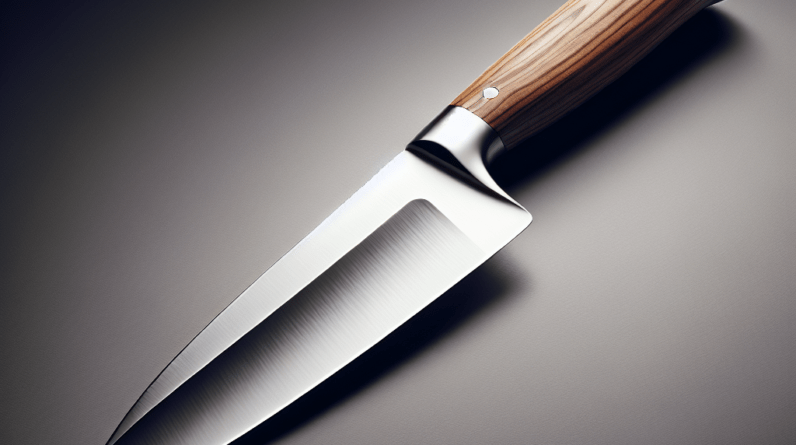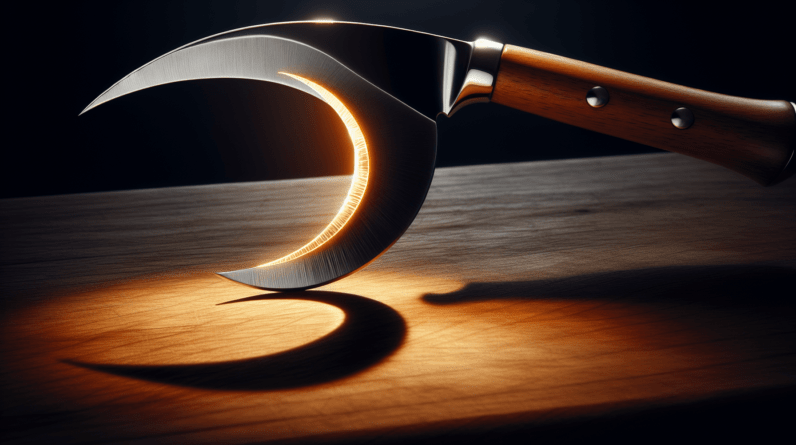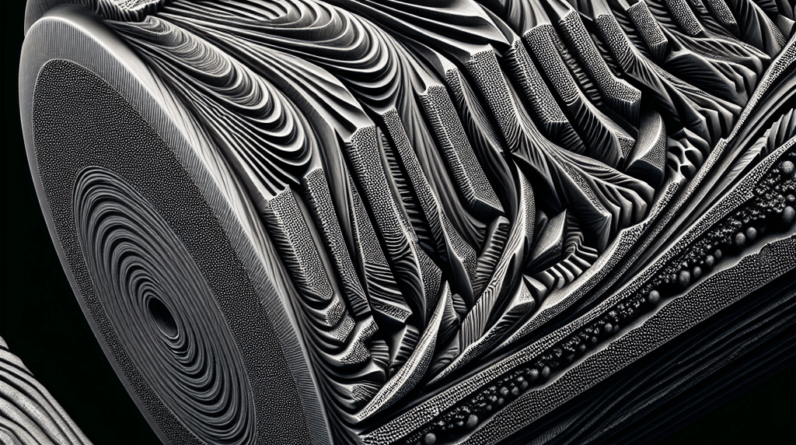In this article, we will guide you on the proper way to sharpen a serrated knife. Whether you are a professional chef, a home cook, or simply someone who enjoys a sharp blade in the kitchen, knowing the right technique for sharpening serrated knives is essential for maintaining their longevity and performance. So, if you’ve ever wondered how to bring back the razor-sharp edge to that trusted serrated knife in your collection, keep reading to uncover the secrets of achieving a perfectly sharpened blade.
Understanding Serrated Knives
Serrated knives are a popular choice in many kitchens due to their unique cutting capabilities. Unlike traditional straight-edged knives, serrated knives have teeth-like serrations along the edge of the blade. These serrations act as small individual blades that can grip and tear through tough materials more effectively. Understanding the different types of serrated knives and their advantages can help us make the most of these versatile kitchen tools. Additionally, knowing the intricacies of sharpening serrated knives properly is essential to maintain their effectiveness and longevity.
Different Types of Serrated Knives
There is a wide range of serrated knives available, each designed for specific purposes. Some common types of serrated knives include bread knives, steak knives, tomato knives, and utility knives. Bread knives typically have longer blades with large serrations, making them ideal for cutting through crusty bread without squishing the soft insides. Steak knives have shorter blades and finer serrations, ensuring smooth and precise cuts through meat. Tomato knives have serrations that are specially designed to cut through delicate tomato skin without crushing the fruit inside. Utility knives have a variety of serrations that make them useful for various general kitchen tasks.
Advantages of Using Serrated Knives
The unique design of serrated knives offers several advantages compared to traditional straight-edged knives. Firstly, serrated knives excel at cutting through tough and fibrous foods, such as crusty bread, tough meat, or hard-skinned fruits. The serrations act as miniature saw blades, allowing us to grip and tear through such materials with ease. This cutting action requires less effort and reduces the chances of causing uneven cuts. Additionally, the serrations of these knives tend to stay sharper for longer, reducing the frequency of sharpening required. Serrated knives are also less prone to slipping on smooth surfaces, providing better control and safety during cutting tasks.
Why Sharpening a Serrated Knife is Tricky
Although sharpening a serrated knife is necessary to maintain its optimal performance, it can be a daunting task due to the unique serrated edge. Unlike straight-edged knives that can be sharpened uniformly, serrated knives require special attention to sharpen each individual serration. The small teeth on the blade make it difficult to use traditional sharpening methods effectively. However, with the right techniques and tools, we can achieve a sharp edge on our serrated knives.
Methods for Sharpening Serrated Knives
Sharpening a serrated knife requires a different approach compared to sharpening a straight-edged knife. Three common methods for sharpening serrated knives are manual sharpening with a sharpening rod, using a sharpening stone, and using electric knife sharpeners specifically designed for serrated blades.
Manual Sharpening with a Sharpening Rod
Manual sharpening with a sharpening rod, also known as a sharpening steel, is a traditional method that can effectively sharpen serrated knives. To begin, gather the required materials, including a sharpening rod and a damp cloth. It is important to ensure the knife is clean and dry before sharpening.
Next, hold the knife properly by gripping the handle firmly and placing the blade against the sharpening rod at the same angle as the serrations. Starting from the base of the blade, move the knife across the rod in a sweeping motion, following the curve of the serrations. Repeat this process for each serration, maintaining consistent pressure and speed.
After sharpening each serration, it is crucial to test the sharpness of the knife. Carefully run your finger over the blade (avoiding contact with the serrations) to feel for any dull spots. If needed, repeat the process on specific areas until the entire blade feels uniformly sharp.
Using a Sharpening Stone
Using a sharpening stone is another effective method for sharpening serrated knives. Begin by choosing the right sharpening stone, considering factors such as grit and size. Soak the stone in water as per the manufacturer’s instructions to ensure optimal performance.
Once the stone is ready, position the knife on the stone, aligning the serrations with the edge of the stone. Using a circular or figure-eight motion, work on each serration individually. Apply consistent pressure and maintain the original angle of the serrations throughout the process.
After sharpening, check the blade’s sharpness by slicing through a piece of paper or softly touching a tomato. If the knife struggles or tears the paper, or fails to slice through the tomato effortlessly, additional sharpening may be necessary.
Electric Knife Sharpeners for Serrated Blades
For those seeking convenience and speed, electric knife sharpeners designed specifically for serrated blades are a great option. Selecting the right electric sharpener is crucial to ensure compatibility and optimal sharpening results. Follow the manufacturer’s instructions for preparing the knife and electric sharpener before beginning the sharpening process.
Adjust the angle and settings on the electric sharpener according to the serrations of the knife. Gently guide the knife through the designated sharpening slot, allowing the built-in mechanisms to sharpen each serration evenly. Repeat the process if necessary, but be mindful of not over-sharpening the knife.
To verify the knife’s sharpness, perform a quick test by gently slicing through a soft food item, such as a ripe tomato. If the knife glides through effortlessly, the sharpening process was successful.
Safety Measures
When sharpening serrated knives, it is important to prioritize safety. By following a few safety measures, we can ensure a smooth and accident-free sharpening experience.
Wearing protective gloves can help prevent accidents and cuts while handling sharp tools. The added grip and protection ensure a secure hold and reduce the chances of slipping.
Maintaining proper stability during the sharpening process is crucial. We should ensure that the knife is securely positioned and that our hands are steady and well-supported to avoid any mishaps.
Avoiding excessive pressure is key to prevent damage to both the knife and the sharpening tools. Applying too much force can cause the knife to slip, negatively impacting the sharpening process and potentially causing injury.
After sharpening, it is important to store the knives safely to prevent accidents. Using knife sheaths or covers and storing them in a designated area away from children’s reach can help maintain both the sharpness of the blade and the safety of those around.
Tips and Tricks
To keep our serrated knives performing at their best, regular maintenance is crucial. Using honing rods can help maintain the sharpness of the serrated edge between more significant sharpening sessions. Simply run the honing rod along the serrations, using light pressure and consistent strokes.
If the task of sharpening serrated knives seems daunting, seeking professional sharpening services can be an excellent alternative. Professional sharpeners have the experience, knowledge, and specialized tools needed to sharpen serrated blades efficiently and effectively.
To avoid common mistakes, always follow the manufacturer’s instructions for sharpening tools and equipment. Using improper techniques or the wrong sharpening tools can potentially damage the blade or compromise its sharpness.
Conclusion
Serrated knives are versatile and efficient cutting tools that require proper sharpening to maintain their effectiveness. By understanding the different types of serrated knives and their advantages, we can make informed choices in the kitchen. When it comes to sharpening serrated knives, using methods such as manual sharpening with a sharpening rod, using a sharpening stone, or electric knife sharpeners specifically designed for serrated blades can help us achieve optimal results. It is crucial to prioritize safety measures during the sharpening process and to regularly maintain our serrated knives to ensure they remain sharp and ready for any culinary task.









